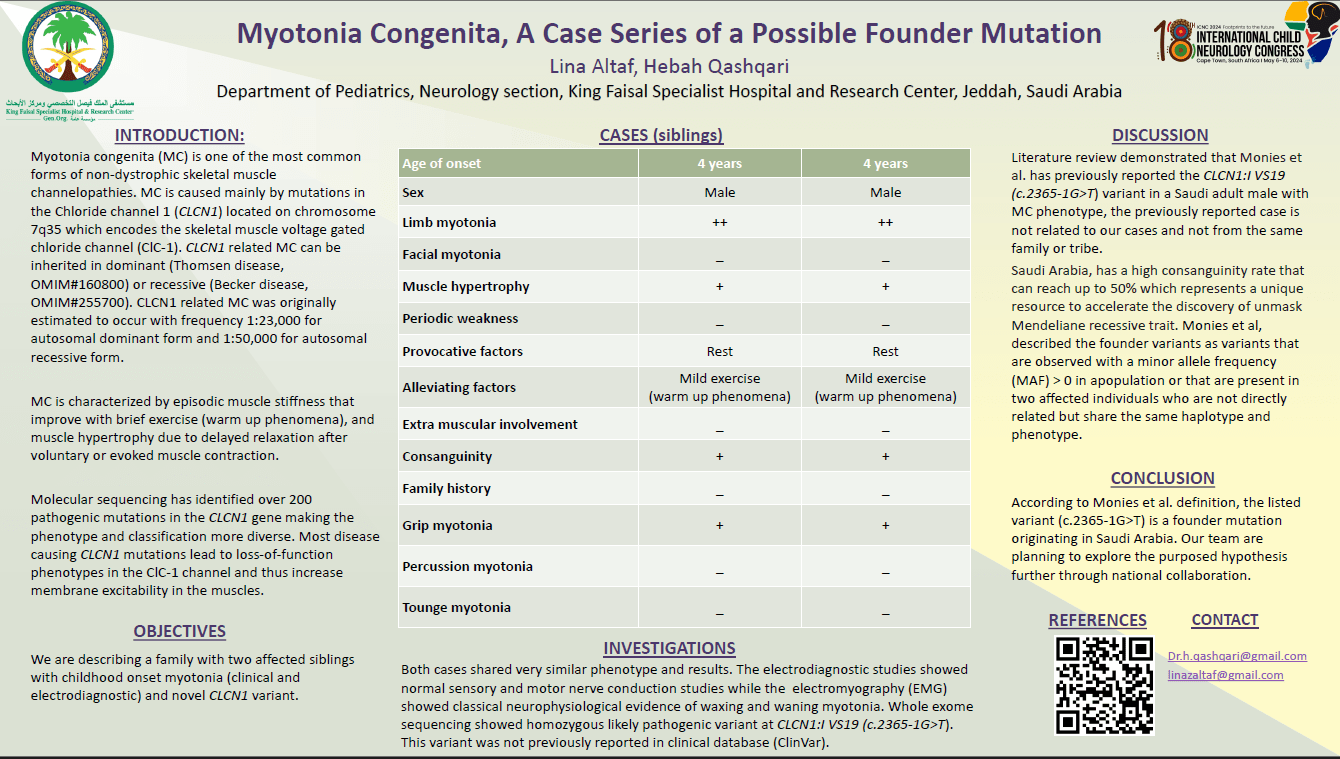Myotonia Congenita, A Case Series Of Possible Founder Mutation
Myotonia congenita (MC) is one of the most common forms of non-dystrophic skeletal muscle channelopathies. It is caused mainly by mutations in the Chloride channel 1 (CLCN1) located on chromosome 7q35 which encodes the skeletal muscle voltage gated chloride channel (ClC-1). CLCN1 related MC can be inherited in dominant (Thomsen disease, OMIM#160800) or recessive (Becker disease, OMIM#255700). Molecular sequencing has identified over 200 pathogenic mutations in CLCN1 making the phenotype and classification more diverse.
Case: We are reporting two male siblings with similar phenotypic and genotypic presentations. The siblings first experienced myotonia as lower limb muscle stiffness at first decade of life with classical warm up phenomena and recently started experiencing positive grip (handshake) myotonia. Their remaining examination was unremarkable. The electromyography (EMG) showed classical neurophysiological evidence of myotonia. Whole exome sequencing showed homozygous variant at CLCN1:I VS19 (c.2365-1G>T). Monies et al. reported this variant in two Saudi adult siblings with the same phenotype. Conclusion: The result of these patients genetic study support the pathogenicity of this variant and indicates the probability of a founder mutation in Saudi Arabia.
Lina Altaf
King Faisal Specialist Hospital ans Research Center
Saudi Arabia
Hebah Qashqari
King Faisal Specialist Hospital and Research Center
Saudi Arabia

Lina Altaf
King Faisal Specialist Hospital ans Research Center
Saudi Arabia